Yesterday we looked at the utter failure that was Eric “I’m CEO Bitch” Schmidt’s idiotic “drones are the future of warfare,” proclamations. Today, in order to give some balance, we take a look at the comical failure of Russia’s attack heli strategy, something we’ve touched on before.
The first photos of a new version of the modernized –
Anytime you hear “modernized” in a military context, prepare yourself for a world of bullshit. We’ll circle back to this at the end of the piece. Hint: it involves putting radar on ground recon and attack aircraft that are looking for immobile and camouflaged targets.
The first photos of a new version of the modernized Ka-52M combat helicopter have appeared in Russian service, with the strong possibility that it’s already participating in the full-scale invasion of Ukraine. While the basic Ka-52 Hokum has become a signature weapon of the Russian campaign, sustaining both heavy losses and inflicting a steady toll on Ukrainian armor, this iteration of the improved Ka-52M version had not been seen anywhere until last week.
We’ll get to the “improved” Ka-52M later, but first I want to bitch about the failed attack helicopter concept. The problem with totally condemning attack helicopters is that a few things can be simultaneously true.
- Fixed wing aircraft are simply superior for CAS and interdiction as compared to rotary craft.
- Attack helicopters can still provide a lot of value, because having something that can fly around, find the enemy, and attack the enemy is useful, even if it’s not ideal.
- Modern air forces are absurdly loss averse parasitical organizations who have deliberately chosen highly profitable and hideously expensive aircraft, leading to an enormous shrinking of their overall fleets.
- Because modern, parasitical air forces refuse to build armoured STOL prop planes, attack helicopters have a role, but they are still not built in nearly high enough numbers.
Similar to drones and neural net AIs, a small amount of nuance is required on this topic. One BANG commenter says the following.
Unfortunately, helicopters can’t really deploy from anywhere. Sure, they can takeoff and land from random fields, but you still need to find a way to get thousands of pounds of fuel into them and re-arm them from said random field.
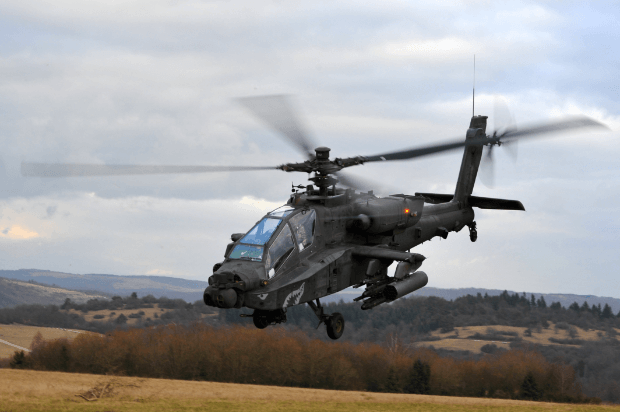
I see only a very small benefit in this area over STOL planes, although of course both are vastly superior to jet fighter princesses which need many thousand feet long pristine concrete runways to takeoff and land from, runways which will probably be nuked in the first few minutes of WW3.

STOL planes can also be staged from just about anywhere.
Attack helicopters are to prop attack planes what bolt action rifles are to an AR-15. Sure, they provide some value, and if your military (((leadership))) refuses to build you assault rifles, a bolt action rifle is better than nothing. I wouldn’t want to get support from or fly an attack helicopter, whether that be an Apache, Cobra, or Alligator, but it beats nothing at all. The latter is largely the situation that Russian and Ukraine find themselves in.
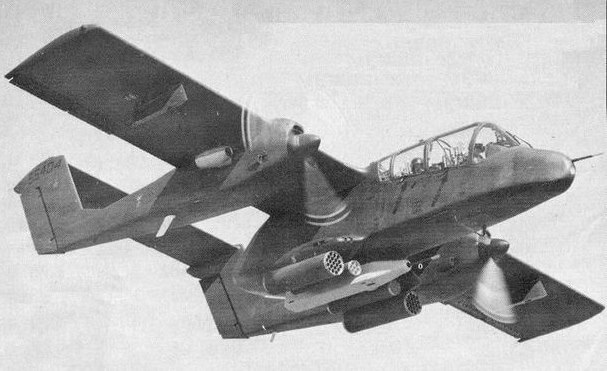
OV-10 Bronco
I say largely, because we do have some footage of the Alligator in action. What we see is them doing the same attack patterns as a fixed wing aircraft, but worse due to the lack of speed, acceleration, climb rate, turning ability, armour, and firepower. The KA-52 below gets shot down, which has been a fairly common story for the KA-52 Alligators in action thus far.
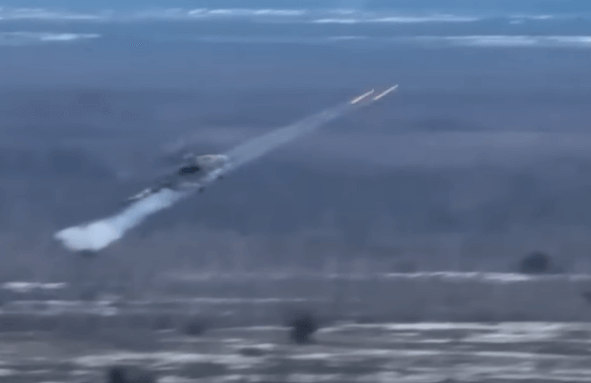
It is almost an insult to your intelligence to explain why this is terrible. There are two main advantages to aerial units. First, they can fly from dozens if not hundreds of kilometers away to congregate at the area where they are needed. Second, they find things for you from the air. If your helicopters are lobbing unguided rockets at the enemy, they certainly aren’t finding anything. The most flattering interpretation is that they’re serving as the world’s most pathetic artillery, but with the upside of good operational mobility.
But there’s no real reason to pretend with the Russian military brass that this is anything other than a cope. While this particular brand of idiocy is unique to the Russians, the American leadership performed a similar coping and seething routine after their Apaches failed in Iraq and Afghanistan.
Apache’s troubles don’t stop there. While proving somewhat useful in Afghanistan, Apache’s proved useless in the Second Persian Gulf War. On March 24th, 33 Apaches were dispatched to attack an infantry division of the Republican Guard. In a fairly unsuccessful strike, one was shot down and 30 were severely damaged by rifle and RPG fire, with some becoming non-mission capable.
After the incident, Apaches were used more cautiously, and less often in attack against enemy ground forces, which was one of the key roles the aircraft was built to perform. Apaches were mostly used for recon after the engagement, and several more were lost or extensively damaged in Iraq in both the recon and attack roles.
The only notable incident released to the public in Afghanistan was several years back when, as part of Operation Anaconda, seven Apaches attacked a Taliban positions and returned full of holes. Five were declared non-mission capable. While their ability to return to base in such conditions speaks well of their survivability and crew safety, the fact that they consistently get shot up so badly in the few large engagements they’re in, and that they are incapable of fighting for long periods of time after said engagements downgrades their reliability.
They built the Apache to attack the enemy military. In the end, they were downgraded to scouting a battlefield after all the fighting was already over. This was done when fighting the Iraqis, and, even more embarrassingly, the Taliban.
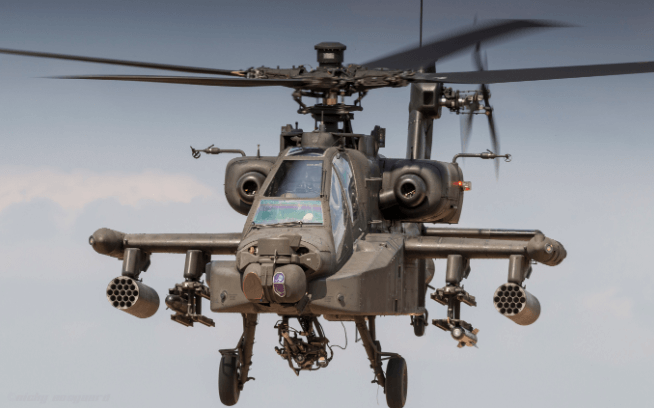
I don’t know what is the more pathetic cope. The Russian “strategy” of using your expensive, fuel guzzling attack helicopters as the world’s most embarrassing artillery, or the US “strategy” of using your expensive, fuel guzzling attack helicopters as glorified documentary producers.
However, helicopter problems aren’t a unique to America, the Soviets lost hundreds in their invasion of Afghanistan, and other countries have seen similar results. In spite of this, they’re still in wide use, though their use has shifted considerably from attack to transport in the past several years.
Which is a rare military leadership W. Helicopters should be used for transport, and even then only when they can make advantage of their VTOL. They are great at that, and terrible at everything else.
The ongoing Libyan Civil War has proved that, in conflicts between two less advanced adversaries, that helicopters can be useful in the attack role, but in situations when the anti-Gadhaffi forces have considerable AA, the helicopters generally either haven’t been used, or have proven ineffective. Their history also points in favor of the opinion that, in a large-scale engagement between advanced adversaries, that attack helicopters would be too easily shot down by AAA before they could inflict considerable damage.
That article was written during the Libyan Civil War. The conclusion that attack helis will be ineffective and easily shot down when fighting against a real adversary appears to be quite prescient. To be completely honest, it was a pretty easy prediction to make, being both logical and based in history.
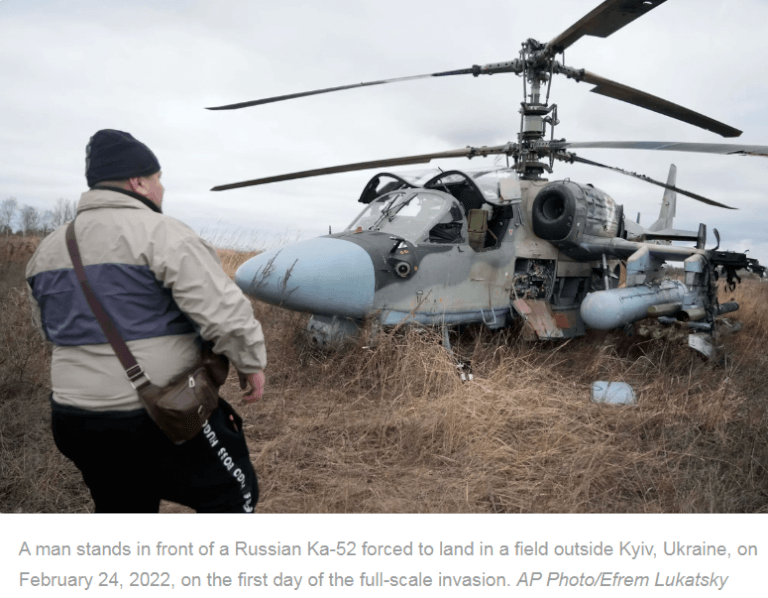
As bad as attack helis are, probably a bigger problem is the sheer lack of inventory on the part of the Russians, or Ukrainians. Let me bring up that WW2 aircraft production graphic that I like so much.

The United States built 325k aircraft during WW2, and lost about 65k, although Wikipedia contradicts that with a claim of 95k lost. The Soviets built 157k aircraft, and lost an astonishing 106,400 aircraft, 60k of which were destroyed on the ground.
The US had just a touch more than one million total casualties from WW2, and about 400k deaths. The Soviets still have disputed casualty numbers, although the official number is about eight and a half million, with four and a half million KIA. The US KIA/Aircraft loss ratio is between roughly 4:1 and 6:1, depending on the numbers. The Soviet KIA/Aircraft loss ratio is around 40:1. We can assume that the Soviets represent the extreme of “just throw your soldiers into the meatgrinder without proper support,” and not that the Soviets were fastidiously planning the proper ratio of manpower/aircraft losses.
In Vietnam the US had just over 200k casualties, just under 60k deaths, and just under 11k aircraft losses, a ratio of about 5.5:1 KIA/aircraft losses.

A1 Skyraider
No one knows for sure what the Russian/Ukraine casualty figures are, but we know that it’s been a bloody war thus far. AP News put out a number two weeks ago of 50,000 Russian KIA. Even if we divide that by two, we’re still talking 25k. If they had the same 5:1 KIA/aircraft loss ratio of the US in WW2, they would have 5k aircraft losses to go with that. Is that what we see?
No, in fact they don’t even have 5k combat aircraft to lose in the first place, not even close. Actually, they only have about 4k total aircraft, not counting a few thousand drones, and the most NATO optimistic estimations of their total aircraft losses cap out around two hundred and fifty. That’s about a one 100:1 KIA/aircraft loss ratio, worse than the Soviets in WW2, a number which shows why the Russian airforce has been such a non-factor in this war thus far. If you don’t have aircraft, it doesn’t matter how much air supremacy you have.
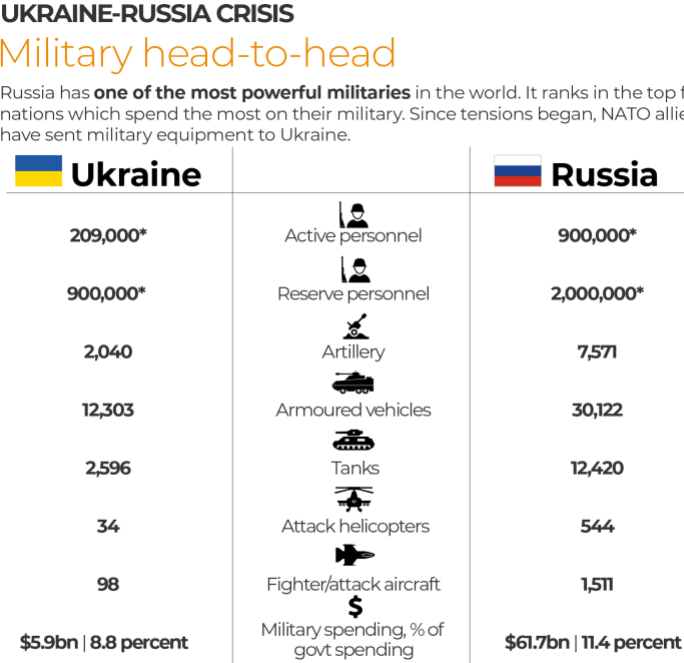
The US military is not much better, only having about 13k aircraft in total. The decision to build such pathetically tiny fleets is a terrible one, but it has come about due to a combination of profits being easier with “high tech” and correspondingly high cost planes, and jet fighters consuming so much strategically precious fuel that there really isn’t much point in having more of them, since you can’t justify the expense of operating them in peacetime.

SU-35
A common cope is that we need to have such timid air force performance, because pilots must be kept alive at all costs now all of a sudden. This is a superficially plausible argument, so I feel the need to address it head on.
Poast commenter:
>why do they only suddenly give a shit about losing a pilot when the send infantry to die in droves
As far as I was aware it’s the training investment into making a pilot that they give a shit about. There’s a big “the plane is replaceable, the pilot isn’t” that they hammered on about last time I went to an Air Show and the RAF was showing off the F111s.
That is arguably true for jet fighter pilots, because the planes they fly have extraordinarily high operating costs, if for nothing other than fuel. A pound of fuel costs almost exactly one dollar, as of time of writing, and these fighter planes consume well over 10,000 lbs of aviation fuel per hour flying, maybe closer to 20,000 lbs, depending on the type of plane and training. Considering that pilots are supposed to get at least 15 hours of flying time per month, more when training, and you’re looking at something like a bare minimum of $1.8 million per year just in fuel costs.
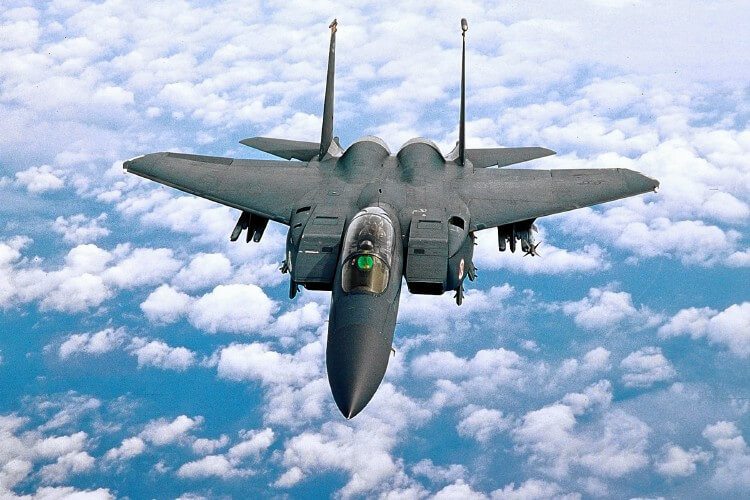
An F-15E Strike Eagle from the 333rd Fighter Wing, Seymur Johmson Air Force Base, N.C., on Aug. 25, 2000. (U.S. Air Force photo by Master Sgt. Thomas Meneguin)
That’s atrocious, and yet another reason to build fuel efficient prop driven planes that are actually capable of CAS and interdiction. It does not take years to teach someone how to fly a prop plane. I myself soloed after just a few flights, and I can tell you that it’s not that hard. It’s also not that expensive, because piston prop planes are many multiple times more fuel efficient, and smaller to boot. Spending a hundred hours teaching an infantryman how to master a piston prop is not a prohibitively expensive operation.
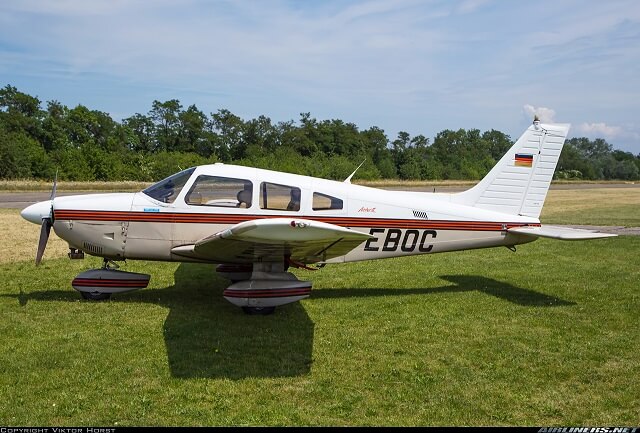
PA-28 Cherokee.
So yes, you don’t want to waste an experienced jet fighter pilot who may represent a $20 million dollar investment by throwing him at the enemy in a plane that is not designed for CAS. The issue is not that Russia should start throwing their fighter pilots lives away failing at interdiction, the issue is that they should have actually built the aircraft capable of doing the job in the first place, in the numbers their military needed.
However, the attack helis appear to be having a bit more success in countering the Ukrainian counteroffensive.
As Ukraine presses on with its counteroffensive in the south and east, making incremental advances in the process, there is evidence that Russia may be starting to enjoy more aerial access over critical areas near the front lines.
As Russia continues to adapt its application of air power, after a fairly dismal start to the campaign, some of its aircraft are now able to operate in a less restricted way, or at least Russia is willing to take on more risk in doing so. Either way, this will put further pressure on the Ukrainian forces, raising questions, in particular, about the availability of mobile short-range air defense systems, or SHORAD. At the very least, as Ukraine gets away from its more entrenched and fixed air defense capabilities, the importance of SHORAD is only going to be underscored.
It is not surprising that aircraft would be more effective against an army on the move. That has always been true, and it’s not particularly difficult to figure out why.

It’s easier to find things that are out in the open, and there are less air defenses in the area, especially if they lack mobile SHORAD systems.
Multiple accounts — including from the media arm of the Russian Ministry of Defense itself — now document how Russian aviation is operating very close to the front lines, with attack helicopters presenting an especially serious threat to the Ukrainian counteroffensive in areas where armored advances are orchestrated. In particular, the Ka-52 Hokum has been repeatedly mentioned.
Perhaps most critically, Russian military bloggers are now more frequently citing the successes of these combat helicopters. There are unconfirmed reports of dozens of Ukrainian armored vehicles being destroyed in recent fighting in the Zaporizhzhia region and elsewhere in the east.
The War Zone spoke to Guy Plopsky, the author of a number of articles on air power and Russian military affairs, and asked him specifically about the involvement of the Ka-52 in the recent fighting:
“While there is much that doesn’t get captured on video, the recent uptick in Ka-52 videos suggests that their activity (and that of Russian attack helicopters in general) has intensified (perhaps significantly) in an effort to halt Ukrainian advances since Ukraine launched its counteroffensive,” Plopsky says. “The same appears to be true for Russian fixed-wing tactical combat aircraft. Indeed, a recent U.K. Ministry of Defense intelligence update noted that ‘[t]he [Russian Air Force] has been unusually active over southern Ukraine, where the airspace is more permissive for Russia.’”
The helicopter received a modernized GOES-451M electro-optical targeting turret –
That’s a fancy way of saying “infrared.” All cameras are technically “electro-optical devices,” but the US MIC started bloviating like this, and I guess the Russian MIC felt jealous.
– the updated BKS-50M (Bortovoi Kompleks Svyazi) communication suite, as well as the SUO-806PM (Sistema Upravleniya Oruzhiyem) stores management system, capable of employing new weapons. The most significant addition to the helicopter’s armament is the introduction of the LMUR guided missile with a range of up to nine miles. You can read a full description of this important weapon in this previous article.
In fairness, all of these additions are fine. Guided missiles can be valuable, and we’ve seen footage of them in action versus loaned US Bradley vehicles.
Russian Ka-52 helicopters fire Vikhr ATGM against 2 x Ukrainian M2A2 Bradley ODS-SA IFVs. pic.twitter.com/DPsDxWf3ZP
— Clash Report (@clashreport) June 12, 2023
What follows, not so much.
Most interesting is an apparently new radar on the Ka-52M seen in the recent photos. Arrow number three points to a small air intake on the underside of the radome in the front of the fuselage; on the other side, symmetrically, is another similar air intake. There are no such inlets in any of the previously seen Ka-52 helicopters.
Radar on a ground attack craft.

Radar is effective when looking up at the sky. Any little return gives you useful information, since you shouldn’t be getting a return at all. That’s not the case with the ground, since you will be getting a return from every tree, rock, blade of grass, clump of dirt, you name it. Unlike infrared or visual light, radar systems are not imaging systems. They can only tell you that you’re getting a return from some area, they don’t actually draw it for you. That’s why (fake) stealth planes are shaped so sharply. X band radar only returns if there is a part of the surface that is directly facing the receiver.
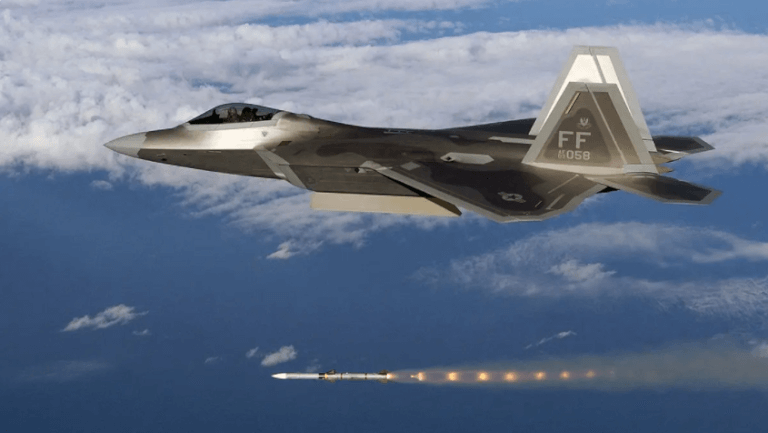
F22 above, F35 below.

Radars are designed to filter out objects that aren’t moving relative to the radar, up to a certain limit, usually about 100km/h. That way you don’t have to deal with massive spurious returns from everywhere on the ground that don’t mean anything. And you do need a velocity cutoff as well, or every blade of grass or leaf shimmering in the wind is going to seem like an object of interest to the radar. Remember, it doesn’t show you the object, only the parts of the object that are facing directly back to the receiver.
A single inlet of larger size, but otherwise similar, is seen in the prototype Ka-52K naval combat helicopter numbered ‘103’. And this leads us to a likely conclusion about the purpose of these inlets. In Ka-52K ‘103,’ this inlet is used to cool the antenna of the Rezets active electronically scanned array (AESA) radar, which is undergoing tests on this helicopter.
The Ka-52M prototypes have the same radar as the regular Ka-52, the FH01 Arbalet-52 produced by Phazotron-NIIR of Moscow. It is a Ka-band (8-millimeter wavelength) radar with a wide 31.5-inch mechanical antenna in the nose of the helicopter. The detection range for a large ground target (e.g. a railway bridge) is 15.5 miles, or 7.5 miles for a tank. The weakness of the FH01 radar is the inability to directly target guided missiles. For weapons guidance, target information must be transmitted by the radar to the GOES-451 electro-optical payload, which is the main targeting sensor of the Ka-52.
The detection range for a railway bridge is irrelevant, since you already know where they are. It’s a bridge. It’s not about to sneak up on you anytime soon, and you could just spot and image them with your eyeballs anyway. Even if they just got built, you would have been able to find the construction crews building them if you had enough interdiction airplanes to be scouting the enemy area in the first place.

The detection range for a tank is also irrelevant, since you can’t spot them if they’re behind anything because the radar is not magical and gets reflected by the trees. Remember that hidden tank from earlier? You’re not finding it with radar.

Even if the tanks are crossing the open ground and you have line of sight to them, you could also detect them with infrared or the good old fashioned eyeball. The radar is extra weight and power consumption for very little in return, but they sure are profitable for their manufacturers, which is why every military contractor loves adding them to everything.
As to the radar on the new version of the Ka-52M helicopter, this is most likely the V006 Rezets radar from the Zaslon company in Saint Petersburg (the same company that makes the V004 radar used by the Su-34 Fullback fighter-bomber). The V006 or RZ-001 Rezets (cutter) radar has a fixed AESA antenna with 640 transceiver modules. The radar works in the X-band and, according to the manufacturer, can detect a group of tanks from 25 miles and a fighter aircraft from up to 31 miles. The Rezets radar is air-cooled, which is why it needs additional air intakes on the radome.
JFC, make it stop. The issue is not theoretically being able to get a return from a group of tanks at 25 miles distance. The issue is being able to differentiate that return from a pile of rocks, some bushes, and everything else in the area. All radar tells you is that there is surface area that is looking back at you. That surface area could be anything.
You would need line of sight to the tanks, anyway, which is unlikely at distances of 25 miles anywhere that has sufficient foliage, especially trees, or even mild hills. This is yet another reason why radar, and especially radar distance, is so irrelevant on low altitude attack aircraft.

But whatever. It’s not ideal, but at least they’ve managed to find some role for these attack helicopters. I’m sure at this point they’ll be mass producing them, something like 1,000 per month would be a good start.
The contract for the first batch of 30 Ka-52Ms for the Russian Aerospace Forces was signed on August 24, 2021, during the Army-2021 forum; 15 helicopters were to be delivered in 2022 and 15 in 2023.
Actually they’re making 15. In a year.

It’s likely this contract has already been fulfilled. During the next Army-2022 forum, the Russian Ministry of Defense placed another order for an unknown number of Ka-52Ms. In July 2023, the Russian Minister of Defense Sergei Shoigu said that deliveries of the Ka-52 in 2023 “have doubled” compared to 2022, i.e. amounting to approximately 30 helicopters, if true.
There are unconfirmed rumours that they’ve doubled the yearly helicopter deliveries to thirty.

This reminds me of Microsoft Teams, where they realized the performance was 1/1000th what it should have been, so they… doubled it. Russia, we’re going to need at least three times more attack aircraft.
It is downright comical how lackadaisical the Russian Military Industrial Complex is. Luckily, the US MIC, which used to be parasitical but decently competent, has decided that competency is Aryan Supremacy, and holocausted that out of its ranks for good.

WW3 may be hell, but it’ll also probably have its moments of levity.

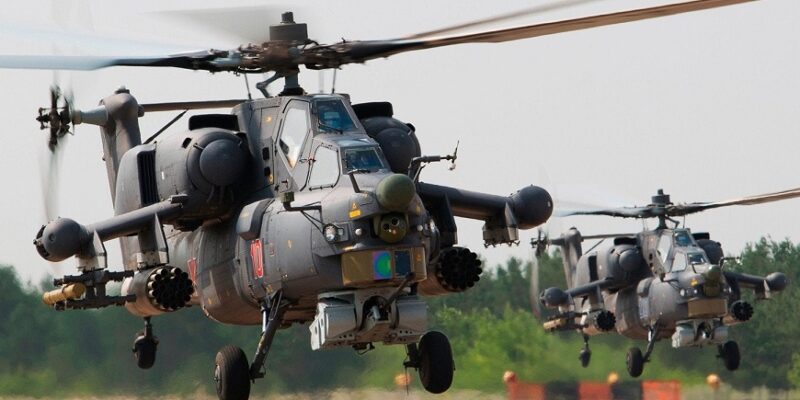




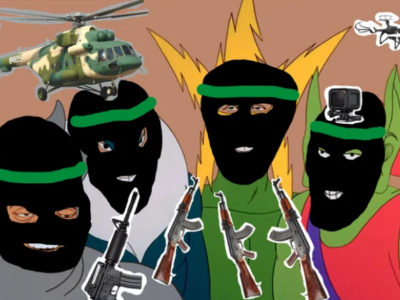


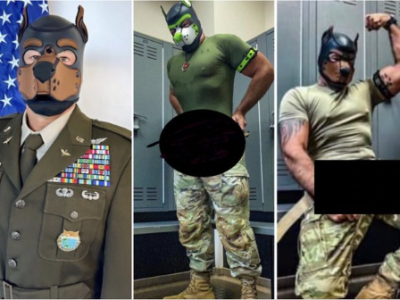






A deeply idiotic piece that does not understand the operational role of CAS, helis, Soviet or modernized Russian doctrine, the nature of the war in Ukraine or the larger geostrategic situation that influences military organization
I’m sure you felt very intelligent typing that out.